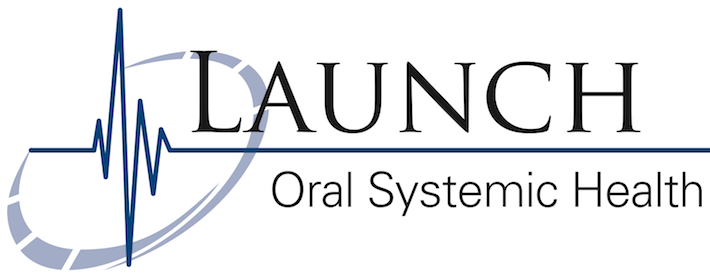Resources for Dental Teams and Patient's Home Care
Oral hygiene education and instruction, with effective home care products, is important to the success of the therapy completed in the dental office.
The high-risk pathogens at work initiating gum disease, and systemically promoting heart disease, in high-risk patients, are constantly reproducing in the oral biofilm; it is a colony of ever growing bacteria that restarts the moment it is removed.
A key to maintaining oral systemic health is to keep this biofilm from completely establishing. This is best done by using products that are formulated to do just that.
To our dental teams- your primary periodontal treatment is complete. A patient has had mechanical debridement with some variation of targeted adjunctive antimicrobial therapy. They need to be instructed on how to mitigate biofilm.
This resource is a great place to start.

Brushing, flossing, and traditional dental cleaning
DO NOT kill high-risk oral bacteria
These do!
CTx4 by CariFree: A dilute flavored solution of sodium hypochlorite, xylitol, and fluoride, at an alkaline pH. For routine periodontal maintenance; use two months after primary care, then switch to Profresh, Therasol, Trilogy, Listerine, or Crest Pro-health.
Therasol by OraTec: Product is composed of 2 compounds; alkyl dimethyl amine oxide and alkyl dimethyl glycine. These synergistic compounds are classified as amphoteric, quaternary surfactants. Tests have shown Therasol's antimicrobial activity to be close to equivalent to a 0.5% chlorohexidine solution and capable of maintaining its activity for up to six hours.
ProFresh: A rinse formulation with chlorine dioxide. Effective for daily maintenance for patients with non-aggressive periodontal disease, patients completing two months of CTx4 therapy, or simply any non-periodontal patient.
Triology: A proprietary blend of biologic ingredients and carbamide peroxide.
OraVital rinses: A number of proprietary rinses are available for certain aspects and timing of periodontal therapy. They are formulated with antibiotics relative to a patient's specific pathogen screening. Not available to patients directly, and dentists are encouraged to take OraVital's proprietary training.
Hydrogen peroxide gel, 1.7%: Is being used in the oral systemic delivery of biofilm control. Hydrogen peroxide is an effective antimicrobial agent when held in contact with the pathogens or biofilm with a professionally fabricated tray. Patients can acquire them from dental offices only.
Professionally formulated antimicrobial rises for daily, weekly, or occasional use- depending on an assessment of currant microbiome balance and stability
Over the counter effective antimicrobial rinses for daily use:
Listerine: an effective over-the-counter product to reduce oral high-risk pathogens. Its antimicrobial formulation is based on four essential oils. It is available with and without alcohol.
Crest Pro-Health with CSP: a chlorine molecule formulation, is effective, similar to Listerine as a daily antimicrobial.

Effective methods to deliver daily antimicrobials
Waterpik: Waterpik Aquarius Professional Water Flosser or the Cordless Water Flossers by Waterpik. The delivery of any antimicrobial agent is most effective when the product can get under the gum margin and into 'pocket' areas. All the above rinse products work well with a waterpik except Listerine.
Phillip Sonicare: a popular power tooth brush that uses ultrasonic wave technology to clean under gum margins and to some degree, into pockets. A power tooth brush is not as effective as a waterpik, but is better than nothing for a non-compliant patient. The patient simply fills mouth with the rinse product and uses the sonic brush to potentially 'drive' the product under gum margins and into pockets.
Oral-B power brush: same appropriate discussion as noted for sonicare power brushes. Oral-B power brushes are based on a different technology than the above, but are very effective in reaching below the gum line to certain depths.
Aerosol Nebulizer: for the delivery of 3% hydrogen peroxide. OTC peroxide is a very effective antimicrobial, does not need to be food grade. Ten minutes weekly for maintenance or ten minutes 3x daily during treatment of active disease for pathogen retention in the aero-digestive system. Coaching by experienced practitioner recommended.
Home-made effective antimicrobial rinse
The following recipe is public knowledge and is based on the Slots' research several years ago on the use of sodium hypochlorite [ NaClO- bleach] for biofilm mitigation at a low cost. Note that the CTx4 product above is based on a sodium hypochlorite formulation. Should any patient elect to use a formulation like this, it must be done while periodontal disease and/or bleeding gums are being supervised, and managed by a trained dental team. Patients would take care to avoid children access to this... or any oral rinse dedicated to reduce high-risk oral pathogens.
First read the label on the sodium hypochlorite in hand, or that will be purchased for this purpose. Patient must know if they have a solution that is 5.25% NaClO or 8.5% NaClO.
For 5.25% NaClO- mix 20 parts water with 1 part bleach. You can add 1 teaspon of Xylitol and a drop of peppermint or orange oil for flavor. Rinse for 1 minute and spit, 2x weekly, do not brush for an hour, or rinse after you brush.
For the 8.5% NaClO- mix 32 parts water with one part bleach. Same additional instructions as noted above for the 5.25% solution. Rinse for 1 minute and spit, 2x weekly, do not brush for an hour, or rinse after you brush.
In this manual, you will find:
-
Most comprehensive pathogen based oral systemic implementation guide available to dentistry.
-
The complete guide to oral pathogen initiated systemic inflammatory disease and mitigation of the causative biome and translocated micro-biomes.
-
A compelling conviction to transform traditional dental hygiene delivery based on current science.
-
Easy to follow steps to evaluate, diagnose, and treat high-risk pathogens in high-risk patients.
-
An antibiotic stewardship guide for treating high-risk patients with translocated high-risk bacteria in place the moment they enter your practice.
-
Over 100 current evidence based references to support diagnostic and treatment recommendations.


